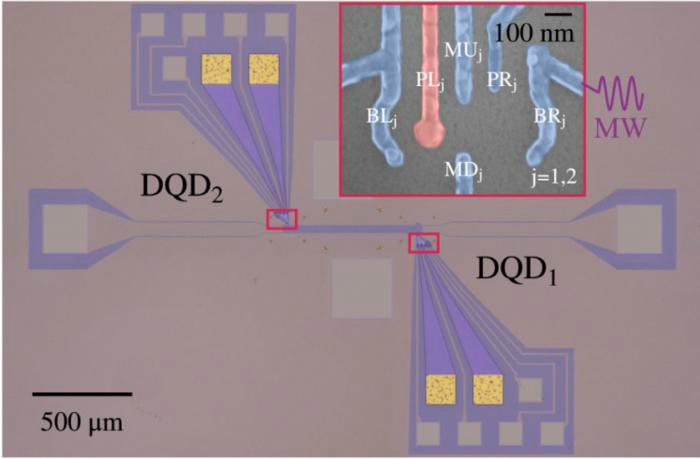A research group headed by Prof. Guoping Guo and Prof. Gang Cao from the University of Science and Technology of China (USTC) of the Chinese Academy of Sciences (CAS), working together with Sigmund Kohler from the Materials Science Institute of Madrid, has come up with a response theory applicable to strongly coupled and multiqubit systems. Their research was published in the journal Physical Review Letters.

Optical micrograph of the DQD-cavity composite device. Image Credit: GU Sisi et al.
The key to examining light-matter interactions is a semiconductor quantum dot (QD) strongly coupled to microwave photons. In earlier studies, the team employed a high-impedance super-conducting resonant cavity to apply the strong coupling of the QD-cavity hybrid system. Founded on this strong coupling, the team went on to study the circuit quantum electrodynamics (cQED) of the periodically driven, strongly coupled hybrid system.
In this research, the scientists first developed a composite device of a high-impedance resonant cavity combined with two double quantum dots (DQD). They found that the existing theory for dispersive cavity readout fails owing to the enhancement of the coupling strength by probing the microwave response signal of the DQD-cavity hybrid system under periodic driving.
Hence, scientists came up with a new response theory that cures the cavity as a part of the driven system, unlike the existing theory. With the help of this theory, they efficiently interpreted and simulated the signals in the experiment and further examined the case of a two-DQD-cavity hybrid system under periodic driving.
This research blazed a line for comprehending periodically driven QD-cavity hybrid systems. In addition, the theoretical method devised is not only suitable for hybrid systems with varied coupling strength but can also be extended to multiqubit systems.
Journal Reference
Gu, S. S., et al. (2023) Probing Two Driven Double Quantum Dots Strongly Coupled to a Cavity. Physical Review Letters. dx.doi.org/10.1103/PhysRevLett.130.233602.